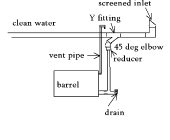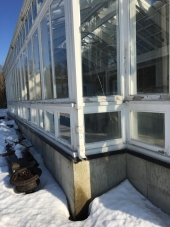








Iterations are fine, we don't have to be perfect
My 2nd Location:Florida HardinessZone:10 AHS:10 GDD:8500 Rainfall:2in/mth winter, 8in/mth summer, Soil:Sand pH8 Flat




Subtropical desert (Köppen: BWh)
Elevation: 1090 ft Annual rainfall: 7"
 1
1




Blessings 
Jeannie




If I am not for myself, who will be for me?
If I am only for myself, what am I?
If not now, when?












Corey Schmidt wrote:Have you tried Rusco spin down or sediment trapper filters? they have a cleanable wire or polyester mesh filter. they are available in a fairly wide range down to 1000 mesh. (1250 mesh is 10 microns). according to wikipedia, pollen ranges from 100 microns down to a minimum of 6 microns. Oak pollen is 24-38 microns. for pollen, I would think the sediment trapper filter would be better than the spindown. these can operate with fairly low pressure, but might still require a pump.






Iterations are fine, we don't have to be perfect
My 2nd Location:Florida HardinessZone:10 AHS:10 GDD:8500 Rainfall:2in/mth winter, 8in/mth summer, Soil:Sand pH8 Flat




Read about our farm and our on-going mission to transform a reclaimed coal mine to productive farm land. www.solacefarmhomestead.com




S Bengi wrote:What if we filled a barrel with the pollen filled water, then let them settle to the bottom.
then drain off the pollen at the bottom and pumped the clear water from the top of said barren into the original storage tank.
How big would this settlement 'barrel' be.
How long would it take for the pollen to settle to the bottom by gravity, and what can we do to expedite the process.

| I agree. Here's the link: http://stoves2.com |




